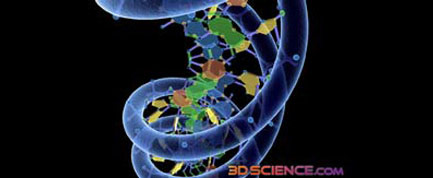DNA Found in Drinking Water Could Aid Germs

DNA that helps make germs resistant to medicines may increasingly be appearing as a pollutant in the water.
This DNA was found "even in treated drinking water," researcher Amy Pruden, an environmental engineer at Colorado State University in Fort Collins, told LiveScience.
The spread of this DNA could exacerbate the already growing problem of drug resistance among potentially infectious microbes. Diseases once considered eradicated, such as tuberculosis, are making alarming comebacks. Currently, more than two million Americans are infected each year by resistant germs, and 14,000 die as a result, the World Health Organization reports.
"I personally have known people with antibiotic-resistant infections, and they can be very scary," Pruden said.
Resistant microbes
While antibiotics kill off many germs that have no resistance against them, they also prompt the spread of microbes that are resistant. The over-prescription or other improper use of these drugs helps these resistant infections emerge, but experts also note that up to 95 percent of antibiotics are excreted by humans and animals unaltered, seeping into the environment and encouraging antibiotic resistance there.
Pruden's new research did not focus on the presence of antibiotics in the environment. Instead, she looked for the presence of genes that help confer drug resistance to the germs in the first place. Bacterial genes are encoded as DNA, and microbes often swap genes with each other. In principle, antibiotic-resistance genes could persist and spread long after the drugs they target have dissipated.
Sign up for the Live Science daily newsletter now
Get the world’s most fascinating discoveries delivered straight to your inbox.
"The spread of antibiotic-resistance genes in the environment is undesirable, just as is that of any other pollutant, such as PCBs or mercury," Pruden said.
Pruden and her colleagues focused on genes conferring resistance against two antibiotics, tetracycline and sulfonamide, which are linked to urban and farm activity. They investigated a range of northern Colorado waters, from relatively pristine river sediments to water from dairy lagoons to irrigation ditches. They also looked at water from drinking-water treatment plants and effluents from a wastewater recycling plant.
Everywhere
The levels of antibiotic-resistance genes were hundreds to thousands of times higher in waters directly impacted by urban or farm activity than in relatively pristine waters. Still, the researchers discovered the presence of antibiotic-resistance genes in all the waters they investigated.
"Wastewater treatment systems are not designed to treat antibiotic-resistance genes. The treated effluent is usually chlorinated, but even though this inactivates bacteria, it does not destroy DNA," Pruden explained. The DNA they found likely is inside dead or living cells, although it is possible it is floating in the water outside cells.
The researchers will further investigate what other antibiotic-resistance genes are present in the environment, such as ones against vancomycin, often considered the most powerful antibiotic of last resort. They will also explore ways to modify wastewater treatment plants to help them destroy DNA.
Pruden and her colleagues reported their findings online this month via the journal Environmental Science & Technology.
- Top 10 Mysterious Diseases
- Study Details Chemicals in Tap Water
- Bottled Water Sales Soar as Tap Water Safety Questioned
- Rise of Deadly Superbugs should 'Raise Red Flags' Everywhere
- All About DNA










